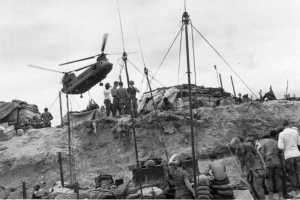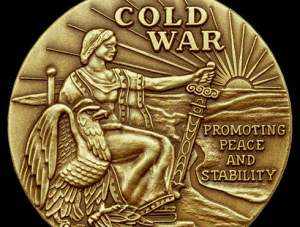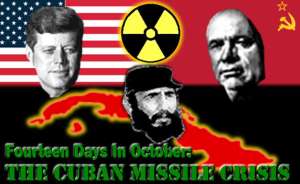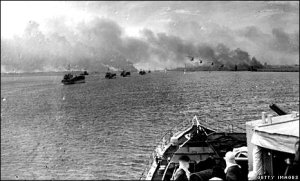At the conclusion of the Indochina War in 1954, Vietnam was separated into two independently run sectors. The communists help power in the North, – under the leadership of Ho Chi Minh- and the anti-communists (partial democrats) governed in the South. Support from the United States (along with multiple other anti-communist countries) flooded to the South. Similarly,  communist countries gave their support to the North. These relationships differed, however, in that the United States provided thousands of troops to help fight in this war, whereas the Soviets and the Chinese simply provided supplies. The American military support for South Vietnam was termed a Client War. This precluded direct militaristic engagement between the two disputing sides. Once Americans were exposed to the brutality of the war through the media, views of their involvement drastically changed. Casualties skyrocketed and progress was nearly non-existent. Multiple anti-war protests emerged across the United States. Some young men (called draft dodgers) even moved to Canada to evade military
communist countries gave their support to the North. These relationships differed, however, in that the United States provided thousands of troops to help fight in this war, whereas the Soviets and the Chinese simply provided supplies. The American military support for South Vietnam was termed a Client War. This precluded direct militaristic engagement between the two disputing sides. Once Americans were exposed to the brutality of the war through the media, views of their involvement drastically changed. Casualties skyrocketed and progress was nearly non-existent. Multiple anti-war protests emerged across the United States. Some young men (called draft dodgers) even moved to Canada to evade military draft. The concluding four years brought a revolution to fighting tactics in Vietnam. Combat troops on the ground were reduced in exchange for the introduction of an air-war. Thousands of bombs were dropped in an attempt to achieve Vietnam’s surrender. In 1973, a cease-fire was agreed upon and the USA evacuated Vietnam while the Viet Cong seized Saigon. Soon after, the North dominated power and the country fell to communism. Anti-communists even fled to Canada to avoid this government.
draft. The concluding four years brought a revolution to fighting tactics in Vietnam. Combat troops on the ground were reduced in exchange for the introduction of an air-war. Thousands of bombs were dropped in an attempt to achieve Vietnam’s surrender. In 1973, a cease-fire was agreed upon and the USA evacuated Vietnam while the Viet Cong seized Saigon. Soon after, the North dominated power and the country fell to communism. Anti-communists even fled to Canada to avoid this government.
 reoccurring themes of the cold war. Soviet Union and the US were using nuclear warheads to gain power and control. Suspicion and hostility dominated most minds as they were to always been on the look out for spies. The growing sense of distress and anxiety was being fed by the abundance of propaganda being spread from both sides. Once the Soviet Union broke up, it marked the end of the Cold War.
reoccurring themes of the cold war. Soviet Union and the US were using nuclear warheads to gain power and control. Suspicion and hostility dominated most minds as they were to always been on the look out for spies. The growing sense of distress and anxiety was being fed by the abundance of propaganda being spread from both sides. Once the Soviet Union broke up, it marked the end of the Cold War.










